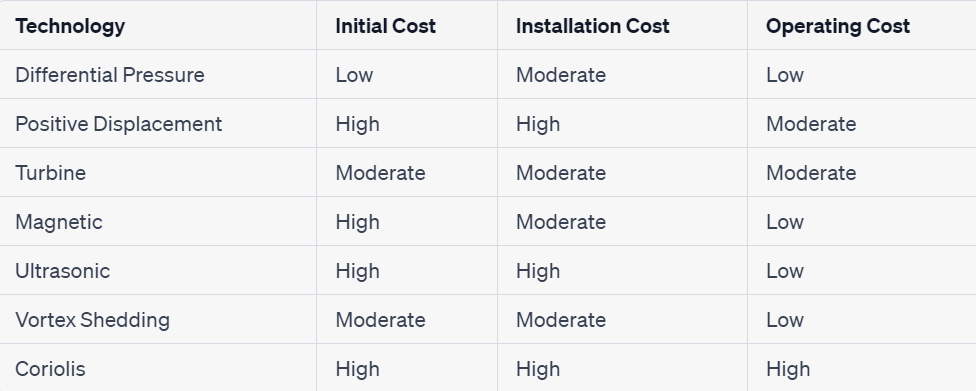Understanding the Initial Cost of Flow Meters: Factors and Considerations
- ADMIN

- May 1, 2023
- 3 min read
Flow meters are essential tools for measuring fluid flow in a variety of industries. They provide vital information for monitoring and controlling processes, ensuring optimal performance, and meeting regulatory requirements. However, one significant consideration when selecting a flow meter is the initial cost. The initial cost of a flow meter can vary widely depending on various factors and considerations, which we will explore in this article.
Factors Affecting the Initial Cost of Flow Meters
Technology: The technology used in the flow meter plays a significant role in determining its initial cost. Different types of flow meters, such as differential pressure, positive displacement, turbine, electromagnetic, ultrasonic, and vortex, have varying levels of complexity and functionality, resulting in different initial costs.
Size: The size of the flow meter is another crucial factor that affects its initial cost. Larger flow meters require more materials and components, making them more expensive than smaller ones.

Installation: The installation process can also affect the initial cost of a flow meter. Complex installations, such as those that require excavation or extensive piping modifications, can be more expensive than simpler installations. Maintenance: The required maintenance of a flow meter can also impact its initial cost. More complex flow meters may require more frequent or specialized maintenance, leading to higher initial costs. Calibration and accuracy: The level of accuracy required for the flow meter and the calibration process needed can also impact the initial cost. Higher accuracy flow meters and those that require more complex calibration processes may be more expensive. Considerations When Evaluating the Initial Cost of Flow Meters Long-term cost: It is essential to consider the long-term cost of a flow meter when evaluating its initial cost. A lower initial cost may result in higher long-term costs due to higher maintenance and calibration requirements or lower accuracy, leading to potential production losses and regulatory fines. Application requirements: The application requirements should be evaluated when selecting a flow meter. Different applications may require different levels of accuracy, durability, and functionality, leading to varying initial costs. Expertise and training: The expertise and training required to operate and maintain the flow meter should also be considered. More complex flow meters may require more specialized training and expertise, leading to higher initial costs. Support and service: The availability and quality of support and service from the manufacturer or supplier should also be considered. A reliable and responsive support and service team can help minimize maintenance and repair costs, potentially offsetting a higher initial cost.

As shown in the table, different flow meter technologies have varying initial costs, maintenance costs, calibration costs, and long-term costs. For example, electromagnetic, ultrasonic, and vortex flow meters have high initial costs but lower maintenance, calibration, and long-term costs. On the other hand, differential pressure, positive displacement, and turbine flow meters have lower initial costs but may require more frequent or specialized maintenance and calibration, leading to higher long-term costs.

In conclusion, the initial cost of a flow meter is an important consideration when selecting the appropriate technology for a specific application. While some technologies may have a higher initial cost, they may provide long-term cost savings through increased accuracy, reduced maintenance costs, and improved efficiency. It is important to weigh the initial cost against the overall benefits and requirements of the application to determine the most cost-effective solution. Additionally, factors such as installation, maintenance, and accessories should also be considered when evaluating the total cost of ownership of a flow meter. Ultimately, careful consideration and evaluation of all cost factors will help ensure the selection of the most suitable flow meter for a given application.



Comments